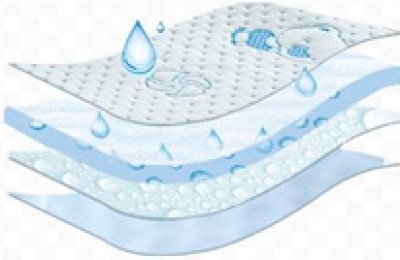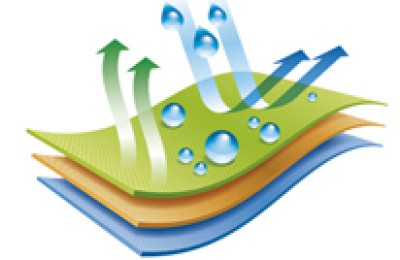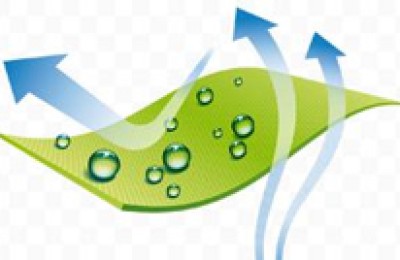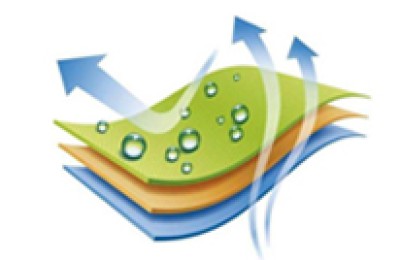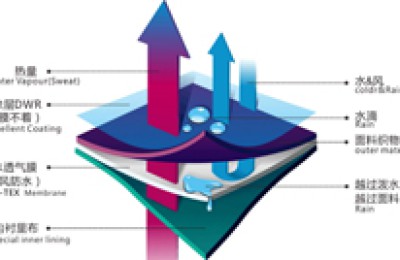As a major downstream of petrochemicals, fluctuations in oil prices have cost fluctuations for the profits of the polyester industry chain. However, whether price increases can be accepted by downstream companies is the key factor that determines the profits of the entire industry chain. From the perspective of the industry, the cost of raw materials is declining – especially when the production capacity of PTA and ethylene glycol is exploding and the overall price is on the downward path, the pricing power of polyester leaders for their products almost determines whether they can enjoy the cost decline. bring excess profits.
We believe that polyester filament is between bulk commodities and personalized commodities. Competition in filament products is fierce, and the price spread is basically determined by marginal supply and demand. It is difficult for companies to obtain excess returns. However, for differentiated products, the premium brought by the product’s technical content creates a barrier to competition, and companies can even obtain benefits from falling costs. excess profits.
Polyester faucets strive for differentiation: Which one is stronger, Hengli, Shenghong, Tongkun or Xinfengming?
1. Excellent representatives of fine Dan: Hengli Petrochemical VS Dongfang Shenghong
Both Originated in Suzhou, the polyester filaments of Hengli Chemical Fiber and Shenghong are both known for their “differentiation”. In fact, both from the perspective of gross profit margin and the number of patents, the “technical content” of both civilian filaments is relatively high: on the one hand, from the disclosure point of view, its gross profit margin is higher than other Filament yarn companies account for about 5%; on the other hand, both invest heavily in research and development.
Therefore, it is necessary to compare the filament assets and R&D capabilities of Hengli Petrochemical and Dongfang Shenghong, and compare the specific differences in product structure and future development direction.
The moat for Hengli Chemical Fiber’s gross profit margin lies in R&D and self-supply of steam: No matter from the perspective of production capacity structure or gross profit structure, Hengli and Shenghong have very distinct characteristics in differentiated filaments. : Hengli’s advantage lies in FDY fine denier. We believe there are three core reasons for the high gross profit of Hengli filament:
1. In the field of FDY fine denier, continuous The company’s new product research and development capabilities give the company a certain say in FDY products; the company continues to disclose new products in its regular reports. The 2017 annual report disclosed that the company’s “polyester super bright draft yarn (jinxiu yarn)”, “triangular special-shaped imitation viscose” “Filament yarn” and “Melt direct-spun ultra-fine denier semi-dull flat yarn” products passed the provincial new product identification; Hengke New Materials independently developed “soft light and comfortable ultra-fine denier special-shaped polyester FDY” and “melt for home textiles” Three new products: direct-spun bright, soft, wavy flat special-shaped polyester FDY” and “five-leaf special-shaped densely dyed comfortable polyester FDY” were recognized as high-tech products in Jiangsu Province. It was disclosed in the 2018 annual report that Hengke New Materials FDY’s new product profit contribution The ratio accounted for 37%, and the proportion of high value-added products such as Deli Chemical’s fine denier yarn, ultra-fine denier yarn, and special-shaped yarn increased.
2. Susheng Thermoelectric, a subsidiary of Hengli Chemical Fiber Co., Ltd., uses steam to improve filament processing. Support – The reason for the increase in processing costs of POY/FDY/DTY products is the increase in energy steam consumption. Therefore, for FDY/DTY products, if they can be produced at cheaper energy prices, the competitiveness will be relatively strong. More specifically, The discussion is limited by space and will not be discussed here.
3. Hengli Chemical Fiber has certain scale advantages in the FDY field: purely based on FDY production capacity It seems that Hengli Chemical Fiber has the largest FDY production capacity of 1.1 million tons, while the FDY production capacity of other filament manufacturers is only about 400,000 tons. Therefore, Hengli Chemical Fiber has a certain scale advantage in FDY products.
Shenghong DTY production capacity ranks first in the country, with outstanding scale advantages: From the perspective of production capacity, Shenghong Group has obvious scale advantages (1.1 million tons), far ahead of other companies (Second in the industry is Hengli, with a production capacity of about 580,000 tons); large enterprises in the industry generally have upstream POY supporting facilities with relatively complete specifications. Compared with small and medium-sized texturing enterprises, they have obvious scale advantages; compared with the equipment required for the production of POY Investment, the investment cost of texturing machines required to produce DTY is relatively small, so the market is dominated by pure DTY processing companies, and the production capacity distribution is small and scattered, mainly through regional matching, reducing auxiliary material procurement costs, relaxing credit periods, etc. Seeking survival space, such companies are also the main customers of POY manufacturing companies.
Relying on scale advantages and certain R&D strength, Shenghong has currently formed 250,000 tons of large optical fibers, 200,000 tons of direct-spun fully matted fibers, and 80,000 tons of cationic fibers. Differentiated fiber production capacity, each product is used to make clothing fabrics (such as suits, shirts, sports and leisure clothing, mountaineering clothing), bedding (such as quilt tops, bedspreads, mosquito nets) and decorative items (such as curtain fabrics, sofa cloths, Wall coverings, car interior decoration fabrics), etc.
2. Comparison of traditional filament giants: Tongkun VS Xinfengming
Tongkun and Xinfengming are relatively comparable: From a geographical point of view, Tongkun and Xinfengming are both filament companies that started in Tongxiang, Zhejiang. From a production capacity point of view, Tongkun and Xinfengming once ranked first or second in the country, so overall they are two superior companies with relatively complete product structures.
From the perspective of development strategies, both companies first expand their filament production capacity and then develop upstream along the industrial chain (PTA). There are two main differences. : 1. Xinfengming has done better in product differentiation, including the proportion of investment in R&D and the proportion of R&D personnel; 2. Tongkun’s strategy of developing filament yarn into PTA�It won’t be too fast. In the long run, R&D investment will continue to grow
The leading melt direct spinning leader has a long way to transform into differentiation: the two mentioned above are the two reasons for polyester companies to transform into differentiation. Threshold: R&D and funds; R&D is easy to understand, but in addition to the relatively large investment, the company’s development strategy in the past two years also has a certain impact on the use of funds for filament differentiation transformation – in short, currently Filament yarn focuses its development more on two roads: For example, Hengli, Shenghong and Hengyi focus their development on the construction and operation of related refineries, which will inevitably consume a lot of money in the early stage. In addition, the progress of investment is also affected by Affected by multiple factors such as R&D progress and market; for traditional polyester leaders such as Tongkun and Xinfengming, the development strategy in recent years has focused more on the supplement of raw materials. The polyester volume corresponds to PTA demand of about 4 million tons. Therefore, whether for Tongkun or Xinfengming, the total investment in PTA is about 7 billion yuan – so for Tongkun and Xinfengming , it is obviously more difficult to increase large investments in differentiated projects.
Based on the above-mentioned factors, we believe that the transformation of domestic melt-spun polyester leading brands to differentiation is still “a long and long way to go”.
There has been a clear growth trend in R&D investment in 2018: From the perspective of R&D investment, traditional leading melt direct spinning companies such as Tongkun and Xinfengming have invested a certain amount in R&D. Growth: In 2018, Tongkun’s R&D investment reached 488 million yuan, a year-on-year increase of 49.32%, and Xinfengming’s R&D investment reached 644 million yuan, a year-on-year increase of 24.44%.
Although this growth is related to the “Guiding Opinions on the Development of the Chemical Fiber Industry during the 13th Five-Year Plan” issued by the China Chemical Fiber Industry Association (the “Opinions” propose that by 2020, large and medium-sized The proportion of corporate R&D expenditures in main business income has increased from the current 1% to 1.2%, and the number of invention patent authorizations has increased by an average of 15% per year). However, the growth in R&D investment is bound to play a key role in the accumulation of technology, thus boosting the industry Transformation to “technological innovation”.
Is it okay if filament faucets are not differentiated?
The answer is that it depends on the positioning of the company itself. It can survive without doing anything, but it is unrealistic how long it can survive and how well it can survive. The reason is related to the driving force for the development of filament in the industry – as the raw material for textile and clothing, the varieties and characteristics of the filament industry are completely transmitted to the upstream through orders. In other words, the fabric characteristics required for downstream textile and clothing force Leading upstream filament production enterprises to carry out differentiated reforms. Therefore, the driving force for the long-term development of the industry lies in the new requirements that end consumers continue to put forward for fabrics.
If filament companies refuse such a request, who will digest the products produced?
Of course, this reform is gradual, but filament production companies must accept such requirements and cannot rest on their laurels – that is, long-term companies must make differences in order to better adapt to consumers. Gradually try to adapt, otherwise it will be difficult to survive for a long time!
</p



